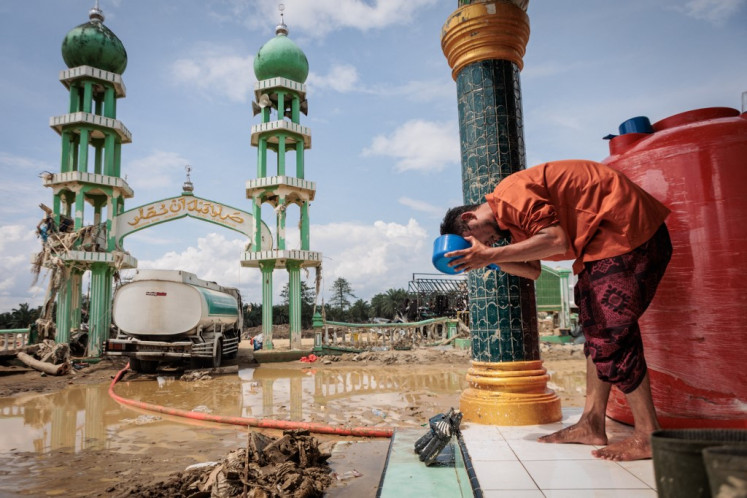Popular Reads
Top Results
Can't find what you're looking for?
View all search resultsPopular Reads
Top Results
Can't find what you're looking for?
View all search resultsCommunity encouraged to help promote islands tourism
The development of the Thousand Islands’ tourist sector should focus on promoting its marine potential and personalized tourism experiences, a discussion recently concluded
Change text size
Gift Premium Articles
to Anyone
The development of the Thousand Islands’ tourist sector should focus on promoting its marine potential and personalized tourism experiences, a discussion recently concluded.
The discussion said the community should be put at the forefront of the development, which should include protecting the islands’ marine ecosystem.
Joko Prihatno, head of the Thousand Islands Marine Park, said the community-based ecosystem preservation would help residents reap consistent benefits from the islands.
“The commercial strength of this regency relies on its ecosystem. So, it is very important to continue urging people to stop exploiting the islands’ resources and involve them in the tourism services.”
Joko cited the park’s successful efforts in facilitating the establishment of dozens of reef plantations in Pulau Panggang subdistrict as an example. The effort, first initiated in 2002, has significantly reduced the exploitation of coral reefs in the area and successfully attracted hundreds of visitors who wanted to learn about reef planting every week.
“The plantations have also helped local fishermen increase their monthly earning almost threefold.”
The director of tourism products at the cultural and tourism ministry, Akhyaruddin, agreed with Joko’s views on the importance of intensifying interactions between the local people and the tourists, saying it would give the latter a memorable visiting experience.
“It will make tourists consider returning.”
The Thousand Islands, located 45 kilometers off the Jakarta coast, boasts a unique sea ecosystem, offering visitors various marine tourist activities, like diving, snorkeling, or staying in beach resorts.
Of the 110 islets in the area, 78 are currently under the conservation of the Thousand Islands Marine Park, which is responsible for protecting the coral reef ecosystems and endangered species, like hawksbill turtles (Eretmochelys imbricata) and bald eagles (Haliaeetus leucocephalus), in the area.
Among the most famous islets are Pramuka for its raptors and Bidadari for family vacations or corporate meetings and getaways. These places can be reached by boat from Marina Ancol or Muara Angke Ports.
In the 1980s, the islands ranked third on a list of the world’s best islands.
However, since 1998, when the economic crisis hit the country, the number of tourists has dropped by more than 50 percent.
Of nine resorts on 45 islands, only five are still in business, while the remainder are dying, following declining occupancy rates.
In 2008, the regency contributed Rp 200 billion, or 13 percent, to Jakarta’s annual revenue from tourism sector, which was Rp 1.5 trillion.
Sahat Sitorus, head of the culture and tourism office in the regency, said the lack of infrastructure and transportation access as barriers for developing the area.
“The transportation to the regency is rare and expensive. With such conditions, most tourists, even those who live in Greater Jakarta, won’t prioritize visiting the islands.”
He also said a government policy that tourism industry in the regency had to consume non-subsidized fuel was another obstacle in attracting new investors. (hwa)










